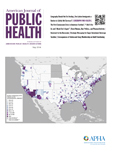
Social Network Predictors of Latrine Ownership in India
Abstract
Poor sanitation, including the lack of clean functioning toilets, is a major factor contributing to morbidity and mortality from infectious diseases in the developing world.
We examine correlates of latrine ownership in rural India with a focus on social network predictors. Participants from 75 villages provided the names of their social contacts as well as their own relevant demographic and household characteristics. Using these measures, we test whether the latrine ownership of an individual’s social contacts is a significant predictor of individual latrine ownership. We also investigate whether network centrality significantly predicts latrine ownership, and if so, does it moderate the relationship between the latrine ownership of the individual and that of her social contacts.
Our results show that, controlling for the standard predictors of latrine ownership such as caste, education, and income, individuals are more likely to own latrines if their social contacts own latrines. Interaction models suggest that this relationship is stronger among those of the same caste, the same education, and those with stronger social ties. We also find that more central individuals are more likely to own latrines, but the correlation in latrine ownership between social contacts is strongest among individuals on the periphery of the network.
Although more data is needed to determine how much the clustering of latrine ownership may be caused by social influence, the results here suggest that interventions designed to promote latrine ownership should consider focusing on those at the periphery of the network. The reason is that they are 1) less likely to own latrines and 2) more likely to exhibit the same behavior as their social contacts, possibly as a result of the spread of latrine adoption from one person to another.
Citation:
H.B. Shakya, N.A. Christakis, and J.H. Fowler, "Social Network Predictors of Latrine Ownership in India" Social Science and Medicine, 125:129-38 (January, 2015) doi: 10.1016/j.socscimed.2014.03.009. Epub 2014 Mar 12